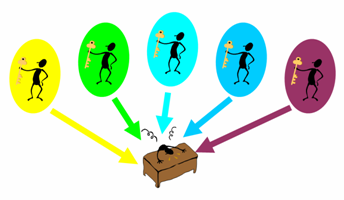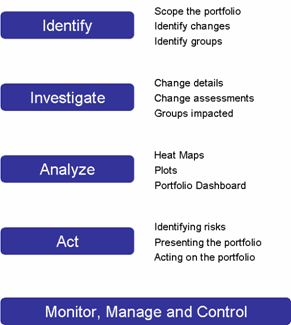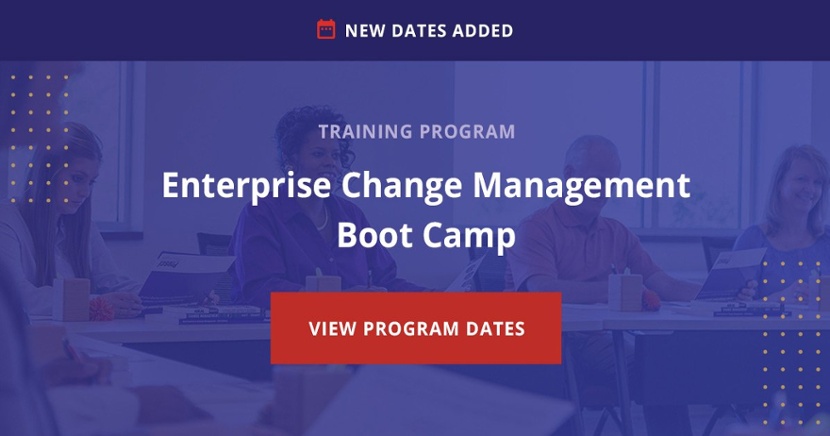Are You Demotivating Your Front-Line Employees?

4 Mins
Updated: November 20, 2025
Published: October 28, 2022

Organizations today are facing, and creating, more change than ever before. The frequency, number, size and importance of change all continue to increase. Senior leaders are focused on making the right decisions and investments with limited capital.
 Project teams are consumed with finding the right solution to the opportunity or issue they are addressing with their projects. Managers and supervisors are working to keep the business running while implementing changes to how that work gets done. The unfortunate reality, though, is that no one is keeping tabs on all of the changes happening—or the portfolio of change. Front-line employees are often the only ones who know how much change is actually occurring because they are the ones who encounter it each and every day.
Project teams are consumed with finding the right solution to the opportunity or issue they are addressing with their projects. Managers and supervisors are working to keep the business running while implementing changes to how that work gets done. The unfortunate reality, though, is that no one is keeping tabs on all of the changes happening—or the portfolio of change. Front-line employees are often the only ones who know how much change is actually occurring because they are the ones who encounter it each and every day.
In an effort to address this common and sometimes costly situation, Prosci has developed a process for managing the portfolio of change. While there is no silver bullet, the approach highlighted below can help you and your organization understand, evaluate and manage the portfolio of changes you face.
Introduction and definition
Change portfolio management is the structured approach and set of tools for understanding, evaluating and managing the portfolio of change. It involves taking an inventory of the changes underway and their impact. Some headway has been made in project portfolio management, but these efforts are often limited to tracking the timing, scope and resource needs of project teams across multiple projects. Change portfolio management is different because it aims to show the cumulative and collective impact of the changes in the portfolio on the people throughout the organization.
Why You need change portfolio management
There several reasons organizations need an approach for managing the portfolio of change underway. The most common reasons include:
- The ever-increasing amount of change organizations face
Organizations face more external drivers of change, including the competitive landscape and a need to stay ahead of the changing demands of customers. Likewise, internal drivers to become more effective and efficient continue to emerge. Across the board, the amount of change is on the rise. - The potential for change saturation
Change saturation occurs when there is more change than individuals and groups in the organization can handle. Each individual and group in an organization has a change capacity they can tolerate. However, when the amount of change disruption exceeds this change capacity, there are negative implications. Individuals become stressed, confused and disengaged. Projects begin suffering. Overall, the organization's productivity declines. A portfolio perspective provides insight into potential change saturation. - The consequences of change collision
Without a portfolio view of change, initiatives and projects begin to collide. Collisions occur on numerous fronts, including budgets for change efforts, human resources needed to support the initiatives, time requirements by people involved, and mindshare of employees. In the absence of a portfolio perspective, these collisions cannot be evaluated and alleviated, and each project and initiative suffers.
Prosci Change Portfolio Management Process
 Prosci's Change Portfolio Management Process involves five distinct phases: 1) Identify, 2) Investigate, 3) Analyze, 4) Act and 5) Monitor. The process provides specific, concrete activities for evaluating, understanding and managing the portfolio of change.
Prosci's Change Portfolio Management Process involves five distinct phases: 1) Identify, 2) Investigate, 3) Analyze, 4) Act and 5) Monitor. The process provides specific, concrete activities for evaluating, understanding and managing the portfolio of change.
The goal is not to arrive at a single, numeric value for the quantity of initiatives that the organization can tolerate. Rather, the goal of change portfolio management is to bring clarity and visibility to the portfolio of change currently underway. With a better view and more concrete data about the portfolio, senior leaders and the organization are in a better position to prioritize and to mitigate the consequences of change saturation and change collision.
Phase 1: Identify
The Identify phase is about setting the parameters for portfolio analysis. It includes establishing the scope of the portfolio analysis, which could be the entire organization but could also be smaller in nature. For example, you could look at changes that impact a particular department, division, region or type/source of change, such as changes initiated by the IT group. The Identify phase involves looking for both project and non-project change occurring throughout the organization, starting with the "usual suspects" who initiate many changes. Creating a schematic of organizational groups enables you to map changes to the impacted groups.
Tools you should use to support the Identify phase include:
- Scope statement
- Change inventory worksheet
- Groups inventory worksheet

Phase 2: Investigate
The Investigate phase involves collecting and generating data on the changes in the portfolio. The first step is to collect a common set of information on each initiative in the portfolio, including budget, timeline and key players for each change effort. A series of assessments allows you to gauge the change management risk and overall project health of each change in the portfolio. Finally, a mapping exercise using the Group Impact Matrix reveals which groups in the organization are impacted by each of the changes in the portfolio. A key benefit of this phase is collecting a common set of data for all changes change in the portfolio.
Tools you should use to support the Investigate phase include:
- Change Scorecard
- Change Characteristics Assessment
- Organizational Attributes Assessment
- Prosci PCT Assessment
- 10 Aspects of Change Impact assessment by group
Phase 3: Analyze
The Analyze phase is where you reach conclusions about the portfolio. Creating heat maps offers a graphic depiction of change impact, as well as the overall level of change disruption and saturation on groups throughout the organization. Plots provide numerous perspectives on the portfolio and its current status. All of the data form the Investigate phase is analyzed and computed using the Portfolio Dashboard, which captures in a single snapshot the positioning and risk of the portfolio.
Tools you should use to support the Analyze phase include:
- Change Heat Maps
- Organizational Heat Map
- Investment vs. Strategic importance plot
- Investment vs. Gap plot
- Investment vs. Scope plot
- Strategic importance/Gap/Scope worksheet
- People risk plot
- People risk worksheet
- Schedule collision diagram
- Schedule collision analysis worksheet
- Investment vs. Risk vs. Project Health graph
- Investment vs. Risk vs. Health worksheet
- Portfolio Dashboard
- Portfolio Dashboard statistics analysis
Phase 4: Act
The Act phase move from analysis to action. Here, risks to projects, groups, points in time and the organization as a whole are identified. The portfolio is presented to key business leaders and others in the organization who need a portfolio view of the change underway. Conclusions and decisions on how to adjust the portfolio are made based on the information provided through the process.
Tools you should use to support the Act phase include:
- Changes at risk worksheet
- Groups at risk worksheet
- Point-in-time worksheet
- Change portfolio SWOT analysis
- Tips for effective portfolio presentation
- Presentation template
- Portfolio action checklist
Phase 5: Monitor, Manage and Control
The final phase involves bringing the portfolio perspective into how the organization manages change efforts on an ongoing basis. Particular attention is paid to how changes enter and exit the portfolio, and what lessons the organization can learn by taking an enterprise perspective. As changes are evaluated and introduced, the impact on the overall portfolio is evaluated. As changes exit the portfolio, analysis on the outcomes and lessons learned is conducted.
Tools you should use to support the Monitor, Manage and Control phase:
- New change worksheet
- Change effort "exit interview" worksheet
- Learning from changes leaving the portfolio
Change Portfolio Management
A holistic process for managing the portfolio of change does not magically solve the problem of change collision and change saturation. However, following this process provides a new perspective and view of the portfolio - one that is missing in most organizations. Individuals, groups, projects and the organization all benefit when the portfolio of change is more actively evaluated and managed.



